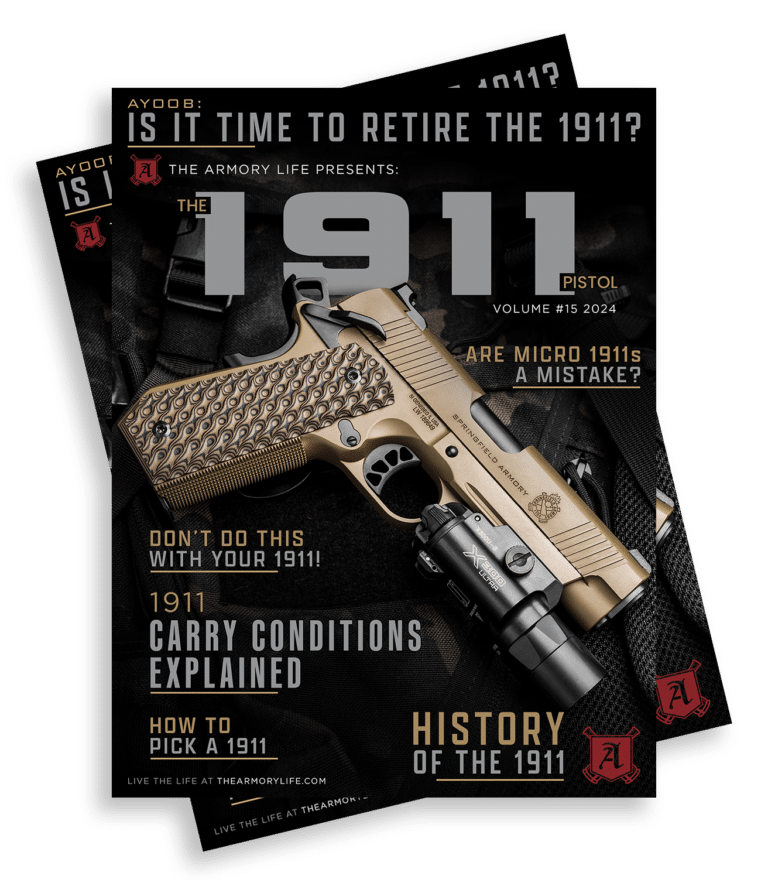Don’t Do These Things with Your 1911!
February 25th, 2024
6 minute read
The 1911 pistol has been with us for a little over a century. Automobiles have been with us somewhat longer than that, and people are still abusing them, so it’s no surprise that the same is known to happen with 1911 handguns. Yep, there are a lot of 1911 handling mistakes going on out there right now. So let’s look at a few examples, and why each of those is a really bad idea.
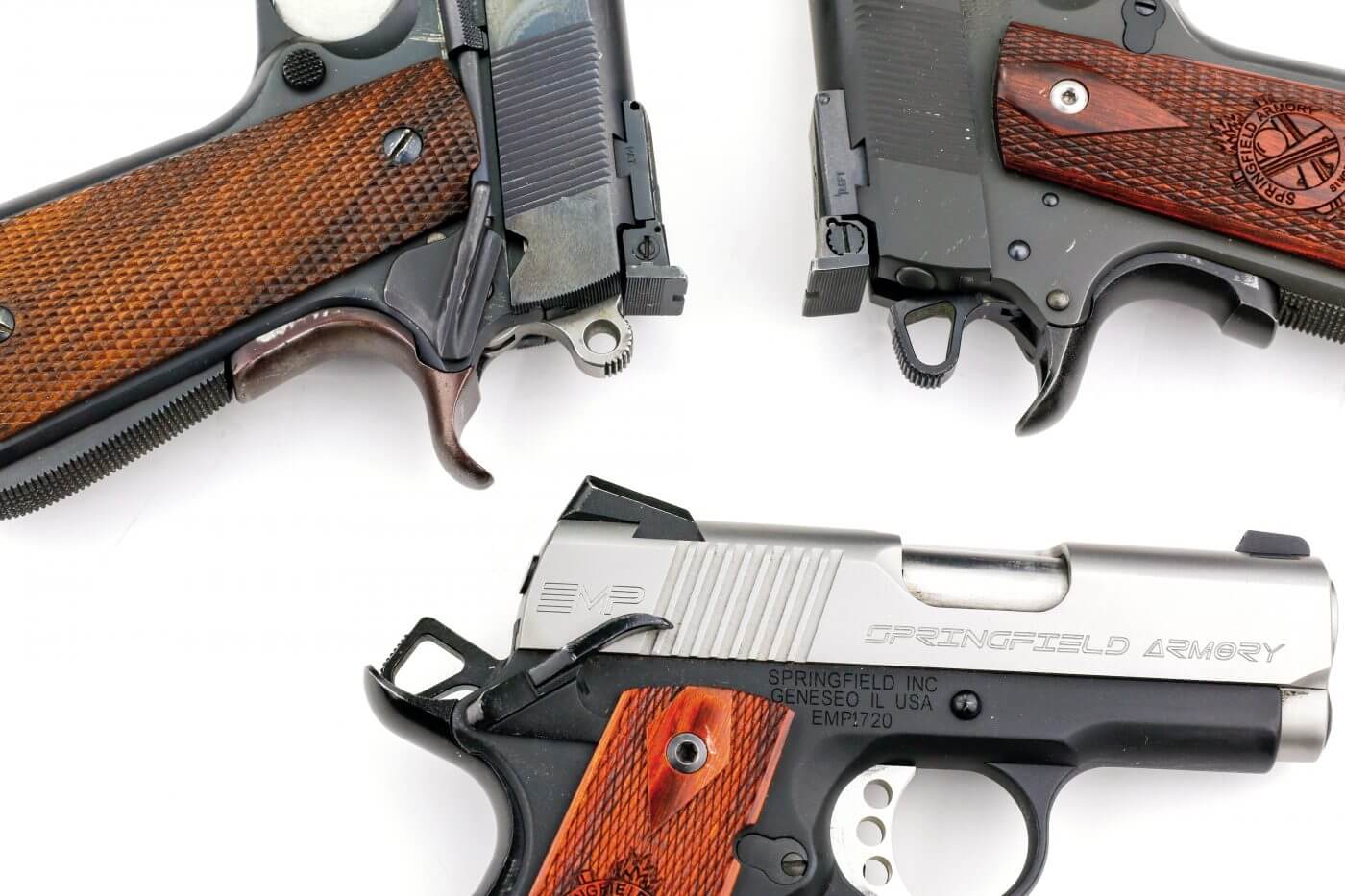
Loading
One thing that makes knowledgeable 1911 users cringe is when a “noobie” locks the slide open, drops a live round into the firing chamber through the ejection port, then slams the slide closed. The extractor wasn’t designed to close over the rim that way, and it beats the heck out of the extractor hook, setting the stage for malfunction or breakage. Moreover, most 1911 pistolsmiths agree that the habit doesn’t do the sear mechanism any good, either.
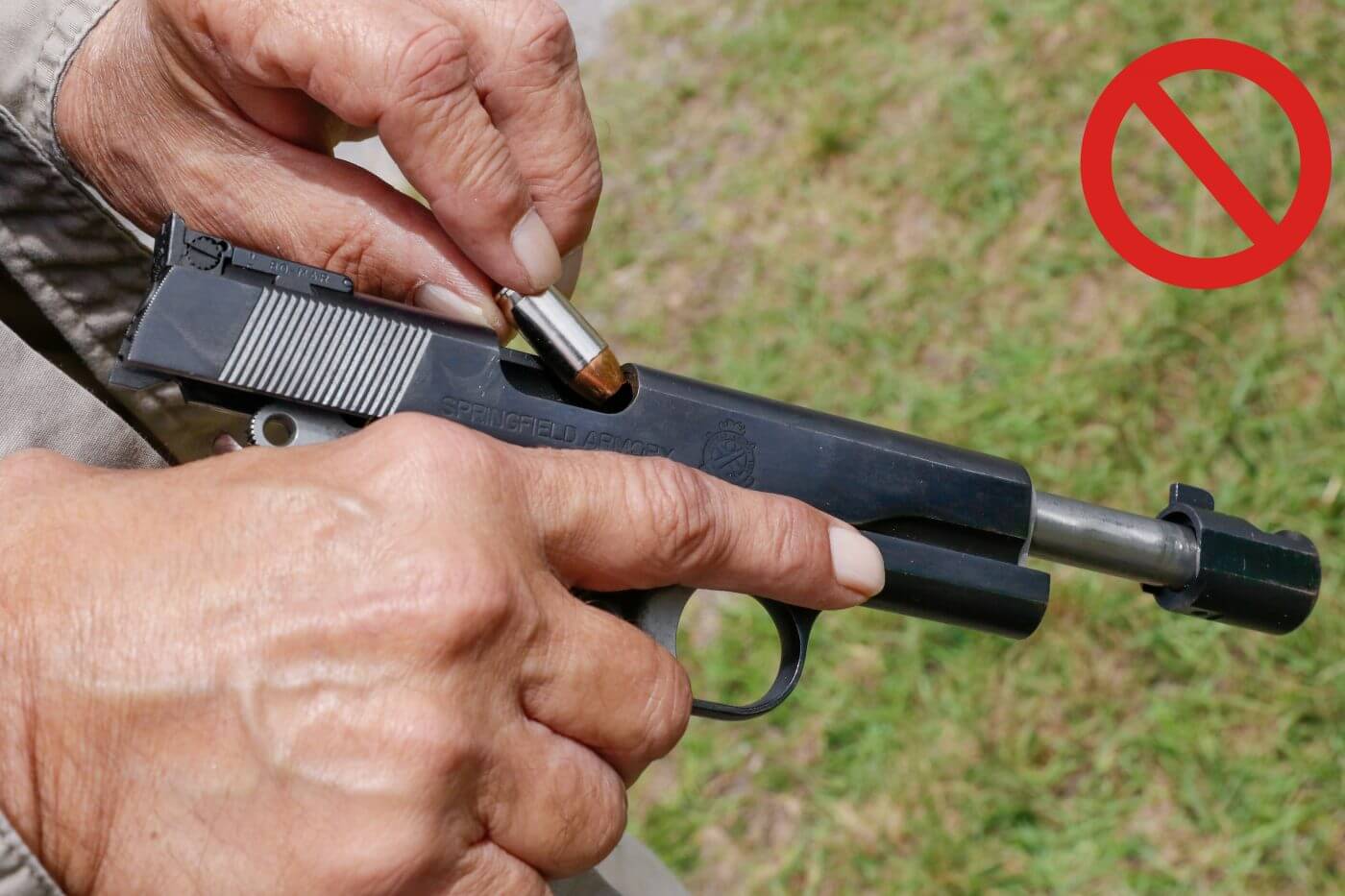
To get to full cartridge capacity, rack the slide to chamber the topmost cartridge from a fully inserted magazine, then on-safe the pistol and holster it. Remove the magazine and replace that topmost cartridge. Re-insert the magazine into the pistol until you hear and feel it click into place. Voila: your 1911 is now fully and safely loaded to full capacity.
Closing the Slide
When it’s time to unload, you have completely removed the magazine and have then drawn the slide to the rear to eject the live cartridge from the chamber. You have locked the slide open and confirmed by sight and by feel (it’s easiest with the pinky finger of the non-dominant hand) that both magazine well and chamber are empty. Now, we are going to close the slide and put the unloaded pistol away.
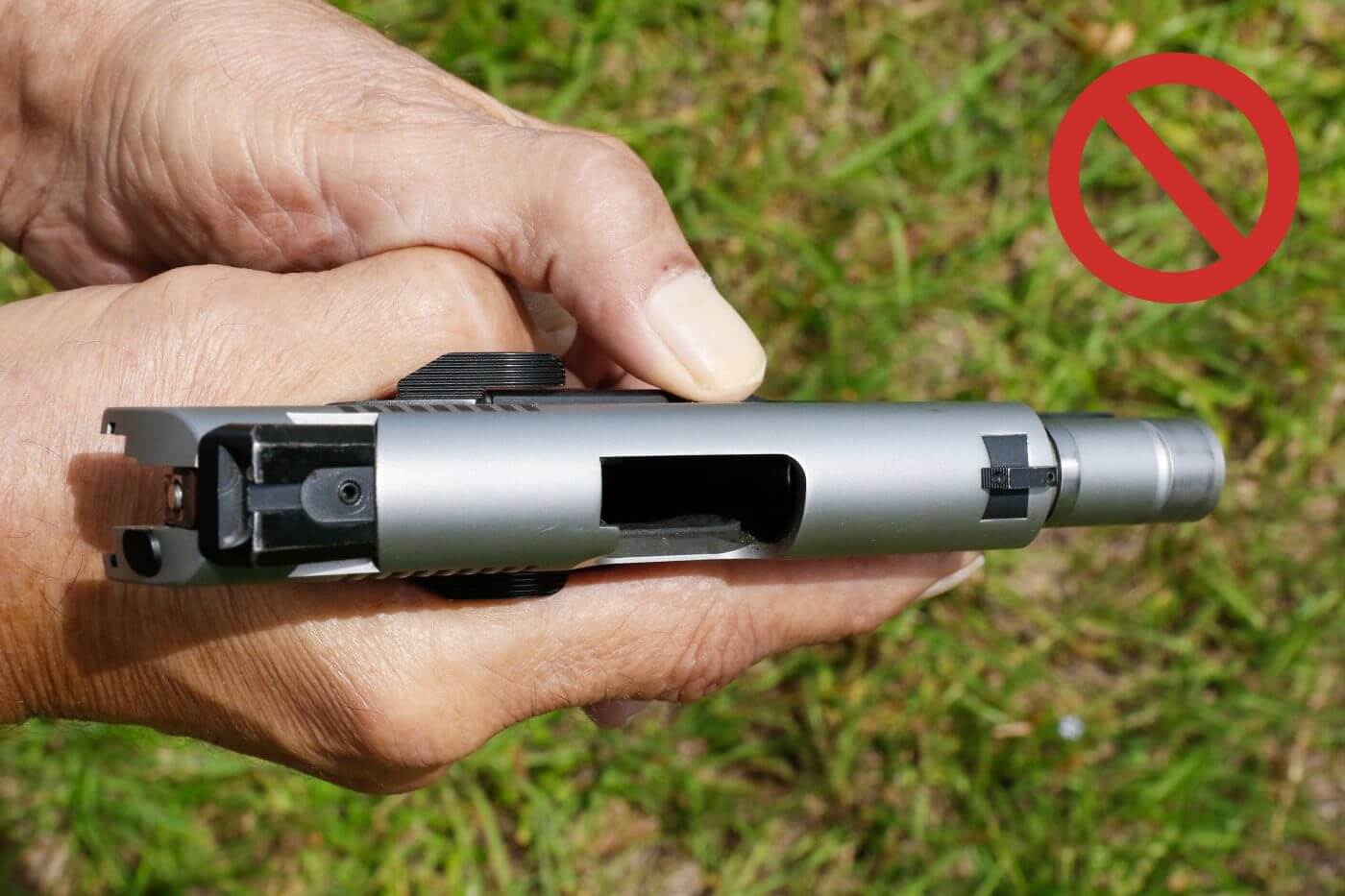
Please don’t let it slam forward. Please. As noted above, it is harmful to the sear mechanism according to some top pistolsmiths. The slide’s forward movement is cushioned in the firing cycle by the resistance of the cartridge it is stripping off the top of the magazine. That cushioning is absent when the slide is slammed closed on an empty chamber. You want to ease it forward when it’s unloaded. That could cause a failure to chamber if you did it when you were loading, but two protocols aren’t that hard to master. The easy way to remember the right thing to do is found in the phrase, “Slam it loaded, but ease it empty.”
Safely Holstering
The short, relatively easy trigger pull of the 1911 is good news for shooting, but if something interdicts the trigger on the way into the holster and the thumb safety has not been engaged … BANG!
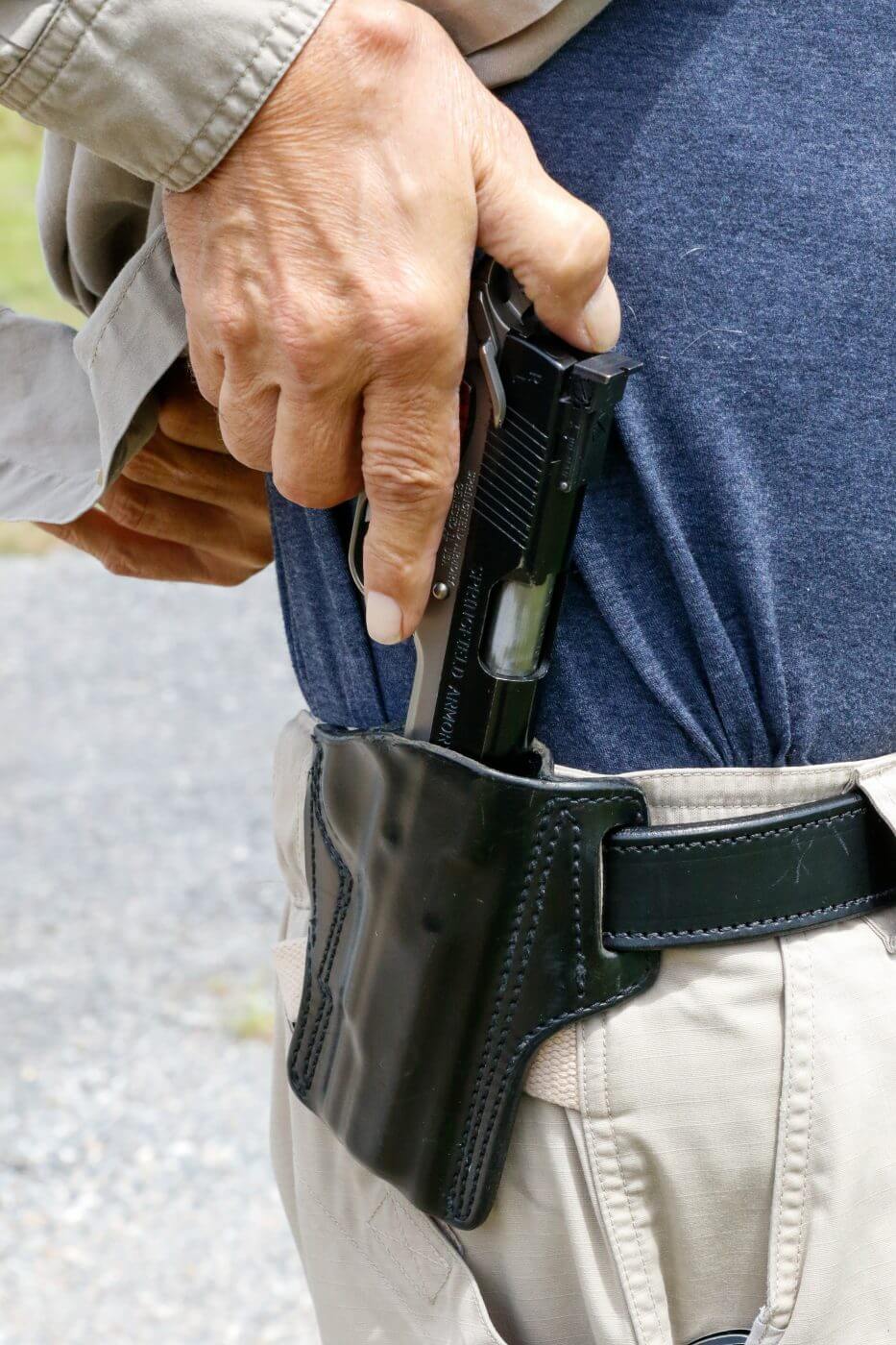
Make sure the thumb safety is up, in the “on safe” position. On the single-action 1911 this only works if the hammer is cocked. Carefully place the thumb of the gun hand on the hammer. If the safety catch has been missed and something has interdicted the trigger, not only is the thumb in place to hold the hammer back and prevent a discharge, but the web of the hand has been removed from the grip safety and that’s active, too — another safety net. Speaking of which …
Deactivated Grip Safeties
A grasp that fails to activate the grip safety means the gun won’t go bang when you want it to. Those who like a high thumb position often find it pulls the web of the hand away from the grip safety and makes firing an iffy thing. One famous advocate of the 1911 and a high thumb position, therefore, recommended deactivating the grip safety. His formative years came before today’s litigious society.
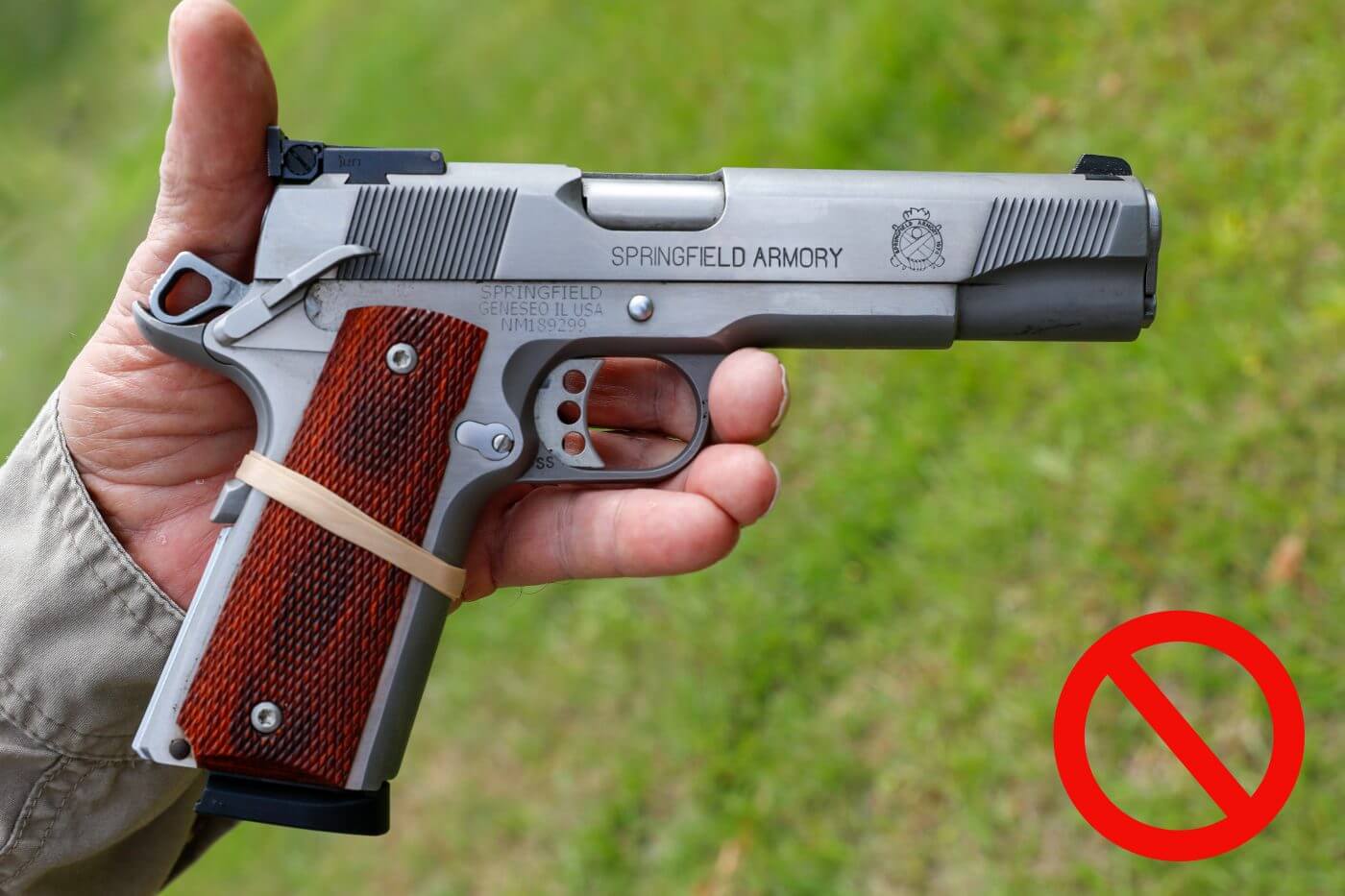
You don’t want to give a prosecutor or plaintiff’s lawyer the nuclear-grade sound bite, “This defendant is so reckless with firearms that he deactivates their safety devices!” If you’ve been failing to depress your grip safety, consider a harder grasp, a lower firing-hand thumb to tighten the web of the hand against that part of the pistol, or a grip safety with a bump at the bottom to better guarantee that it works as John Moses Browning intended it to.
Wrong Kind of Press Check
Some of us get slovenly with our terminology. Retracting the slide to see if there’s a round in the chamber is simply a chamber check, and not a bad thing.
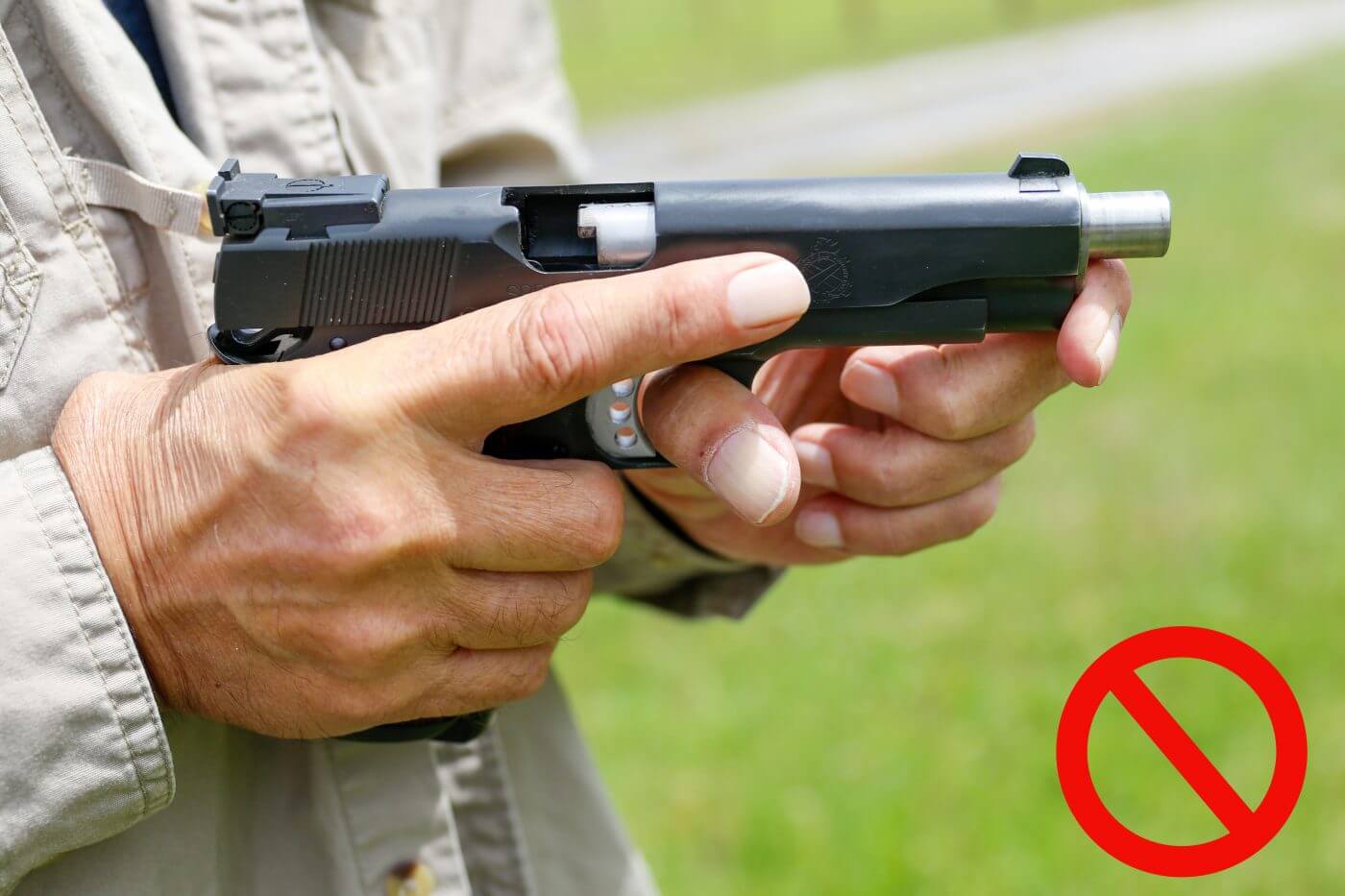
However, it’s improper to always call it a “press check,” which is one specific technique, to wit, holding the thumb of the support hand at the inside front of the triggerguard and using the index finger of the support hand to press back the bottom front of the slide assembly.
This places that digit in front of the muzzle, and the combination of a fat or gloved thumb and a long trigger can cause a discharge when the slide goes back into battery with the finger still there. If the slide comes forward snappily, the momentum can drive the muzzle down until it is in contact with the index finger and — goodbye, finger. Even if the bullet itself barely misses, the muzzle blast is likely to cause a burning, mangling finger injury.
Forward cocking serrations on your slide can give you an option for pressing back the slide without getting your fingers in front of the muzzle, and would get your thumb out of the triggerguard.
Hammer Position
Listen to the advice of the late Col. Jeff Cooper, who led the renaissance of the supposedly obsolete 1911 in the mid-20th century, and all of those who’ve won world and national championships with 1911s in action shooting: if you’re going to carry it with a round in the chamber, carry it cocked and locked!
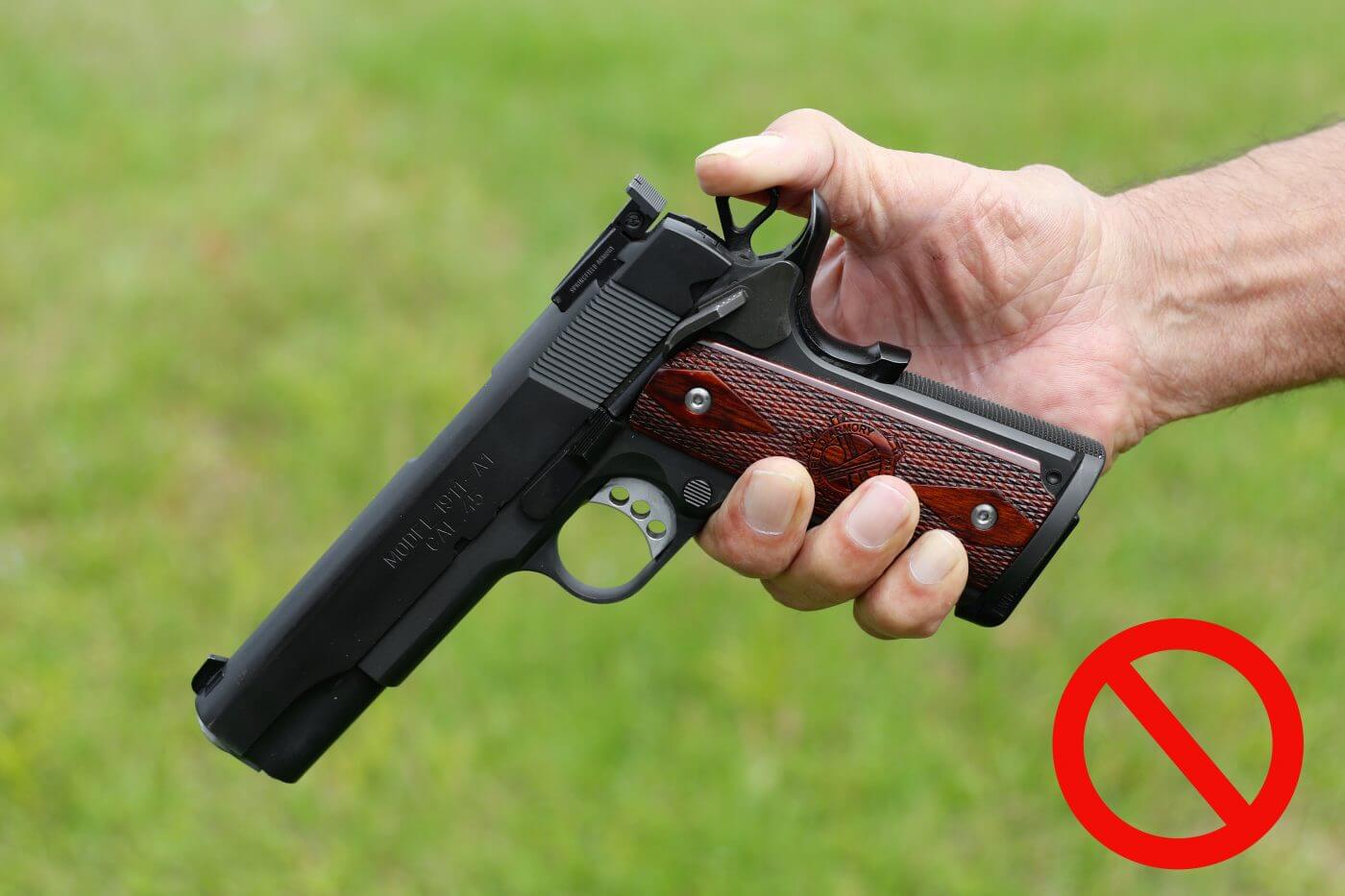
It’s what Cooper defined as Condition One, as opposed to Condition Two, which is hammer down on a live round. The problem is that the hammer sits so far back in the hand that unless you have digits like an orangutan or are double jointed, it’s so awkward that it breaks your hold to thumb-cock it with the firing hand and slows you down terribly.
It’s also so fumble-prone that unintended discharges are highly likely, when cocking or when lowering the hammer after you’ve loaded the chamber. Chances of a fumble increase exponentially under stress or when attempting a quick draw. It’s safe to break your hold enough to hold the hammer back when holstering carefully, but not when you’re trying for a fast draw.
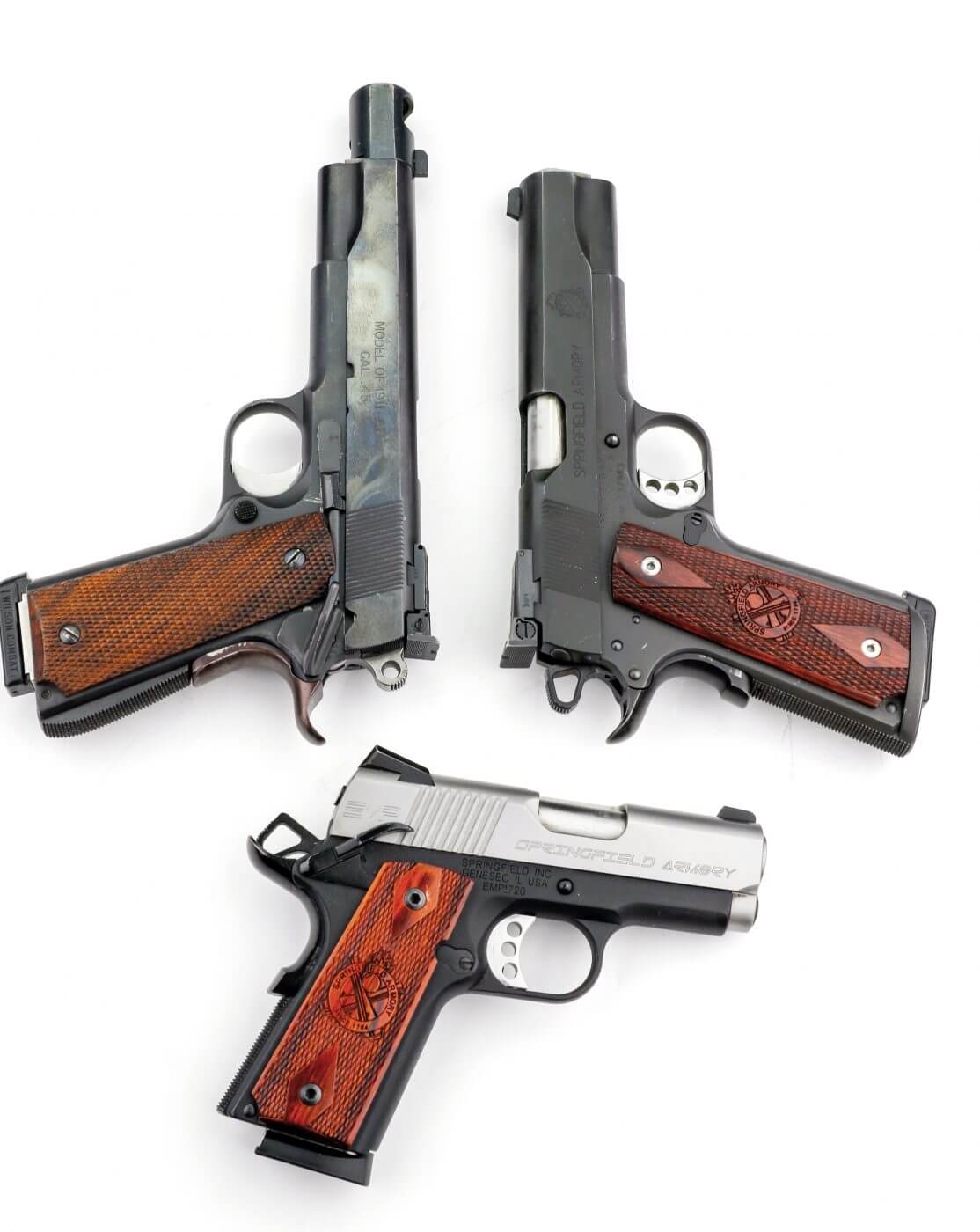
Conclusion
Having used 1911 pistols since 1960 and learned from the best 1911 gunsmiths and shooters, the above advice has served me well, and should do the same for you.
Editor’s Note: Please be sure to check out The Armory Life Forum, where you can comment about our daily articles, as well as just talk guns and gear. Click the “Go To Forum Thread” link below to jump in!
Join the Discussion
Continue Reading
Did you enjoy this article?

 2792
2792




